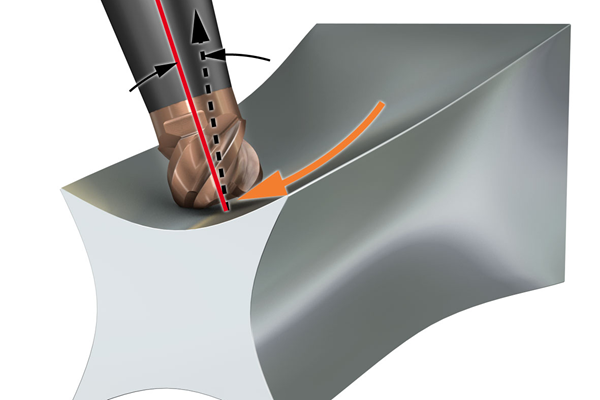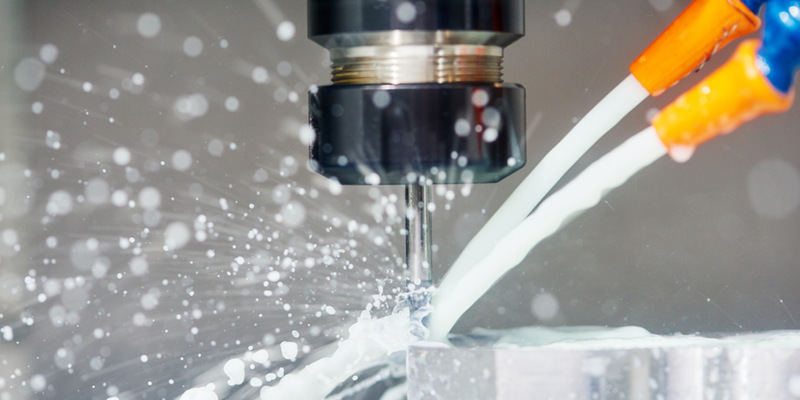- April 20, 2021
Milling a curved surface falls under the umbrella of profile/ contour CNC milling. It involves machining irregularly shaped profiles or continuous curves with various degrees (either slanted, concave, or convex). This is a crucial process in getting most of the uniquely shaped bespoke parts done, which requires the CNC machining services providers to have advanced knowledge of the fundamental machining principles and programs.
Fundamentals to Profile CNC Milling
1. Profile CNC Milling Processes
Before arriving at the final machined part, it will be first subdivided into different categories: roughing/ semi-roughing, semi-finishing, finishing, and super-finishing. The larger the component, the more operation types will be involved. It is important to sub-categorize the operations in machining a work part so that you would be able to maximize the full potential of the tooling and parameters you will be using.
Roughing- This operation is always the first stage of machining and usually begins with cutting the raw material block to shape the part approximately near the desired shape or profile, leaving enough metal stock for further operations.
Semi-finishing- This process involves machining the part as per dimension requirements or removing the remaining stock on the part. Semi-finished parts may also be subjected to further processing to achieve a specific requirement for surface finish.
Finishing- This process comes after the semi-finishing operation. Finishing is done to improve the part’s surface finish by removing obvious burrs and other surface flaws. In this operation, it is essential to use high-performing tools because this will significantly affect the work part’s final appearance.
Super-finishing- the operation goes further until super-finishing if the parts require a mirror finish or a super smooth profile. For this to be achieved, high-speed machining techniques and high-precision tools are used.
2. Get to Know the Tools Used in CNC Milling Curved Surface
To come up with smooth-curved surfaces on a part being fabricated, different variations of rounded end mills are used. These include rounded inserts, ball nose indexable end mills, and ball nose solid carbide. Round-profiled toolings are preferred for contouring applications because it does not leave evident marks of the tool path.
Insert-type end mills with rounded inserts- These tools often come in large tooling diameters. Rounded insert type end mills are well suited for roughing operations due to their high stability and impressive productivity.
Solid ball nose end mill- These end mills can leave a very nice surface finish on a machined part. They may have low stability due to their structure. That is why they are more commonly used for finishing than for roughing operations.
Indexable head ball nose end mills- Indexable head end mills are similar to solid carbide end mills but have exchangeable heads. These special toolings have a detachable end which may be replaced when needed.

General Tips for CNC Milling Curved Surfaces
1. Necessary Preparations
Before deciding to fabricate your custom parts through profile milling, it is also essential that you become aware of the various factors that may affect the whole CNC milling process. In addition to this, there are specific things you need to identify so that you can properly choose the suited machining technique. Below are some of the things you need to be prepared about:
- Be mindful of the cavity depths of your part designs- This plays a significant role in helping you choose the right cutting tools to use and how long will be the gauge length you will be needing.
- Know how much material will be subtracted from the raw block- This will help you plan for the operations required in fabricating your work part, whether you will need additional procedures after semi-finishing and semi-roughing.
- Consider how you will clamp the workpiece in place- This will help you prepare for the necessary fixtures you will be needing.
2. The Old And Classic: Get Your Feeds And Speeds Right
Feeds and speeds determine the rate of material subtraction on the parts, which is why they have a significant impact in achieving an excellent surface finish. For this, calculations are needed to be followed. Feed rates to be used may also be dependent on the depth of cut, the tooling used, the material to be cut, the profile of the part being machined, and the accuracy required.
Disclaimer: We will not mention actual values for the speeds and feeds in this article because these values may vary depending on multiple factors. It is still recommended to refer to trusted references for the actual speed and feeds. Nevertheless, here are the basic rule of thumbs:
The depth of cut and feed rate varies depending on the hardness of the materials being machined. Take note that for harder materials, the feeds and depth of cut are much lower than that of softer materials like aluminum. Furthermore, the harder the material to be cut, the faster the cutting speed should be.
Feed rates and depth of cut for roughing operations are much more aggressive than finishing operations. It is the combination of using high-speed techniques and the right tools that make an excellent surface finish.
3. Tooling Utilization
There are many variations of tools available in the market nowadays. For roughing operations, tooling rigidity should be prioritized to withstand the aggressive cut depth and feed demands of roughing. On the other hand, for finishing operations, the end mills should be very sharp not to leave any evident trace of the tool path. Another difference is the tool diameter used. Typically, roughing tools have larger diameters than that of the finishing tools.
4. Minimize Vibration In Your CNC Milling Processes
Vibration is one of the major causes of undesirable surface finish, chatter, and cutting tool damage. During a milling operation, the vibrations may be coming from multiple sources, including clamping stability, tool rigidity, material hardness, and inaccuracies in the machine spindle. Below are some of our tips to minimize this machining obstacle:
- Use tools with good runout accuracy
- Avoid having too long overhang in your end mills during roughing operations. Instead, use extension bars or extension tool holders
- Secure your work holding fixtures by ensuring that proper grip and balance are maintained during the cutting operations.
- Avoid aggressive cuts when dealing with hard metals.
Conclusion
CNC milling curved surfaces are usually subdivided into different operations (roughing, semi-finishing, finishing, and superfinishing) so that the desired profile is achieved gradually. The toolings used for this type of milling typically have rounded profiles or what is commonly called ball nose end-mills. In summary, CNC milling a curved surface involves doing the necessary preparations, getting the feeds and speeds right, being mindful of the tools you will be using, and minimizing vibrations.





